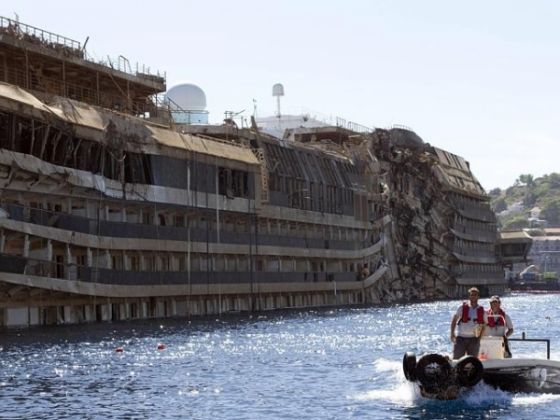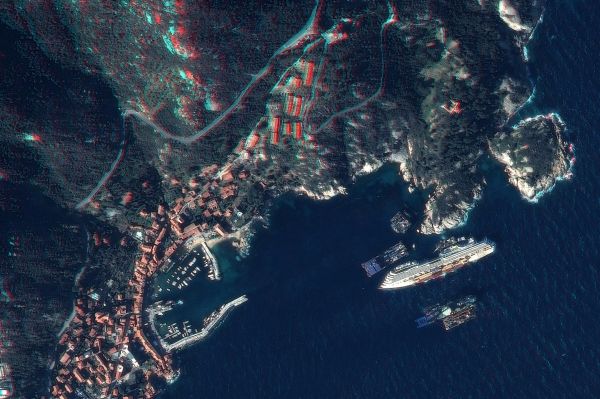Final stage of largest ever maritime salvage operation
The complex operation to refloat the Costa Concordia shipwreck has begun, two and a half years after it ran aground on rocks after sailing too close to the small Tuscan island of Giglio, killing 32 people.
The project involves pumping air into the 30 sponsons (stabilisers) attached to the 290-m long wreck, slowly expelling the water in the tanks, and is expected to take between six and seven days.
The first stage of the operation on 14 July should see the 114,500-tonne wreck raised about two metres from the artificial platform on which it has rested since it was uprighted last September.
The plan is to move it away from shore using steel cables and chains but the process is risky as there are concerns that the cables could snap under the strain of the giant wreck. There will be a crew of 42 salvage workers on board the partially submerged vessel during the first manoeuvre but there are emergency evacuation measures in place should disaster strike.
The main refloating process is scheduled for between 17 and 19 July when the sponsons will be pumped full of air and the decks cleared of debris. All going to plan, the cruise liner will then be towed to the north-west Italian port of Genoa where it will be dismantled and sold for scrap.
For more details on the ship's planned final voyage as well as the enviornmental risks see related article.






















